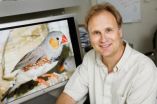(Press-News.org) "Goat plague," or peste des petits ruminants (PPR), is threatening global food security and poverty alleviation in the developing world, say leading veterinarians and animal health experts in this week's Veterinary Record.
They call on the UN Food and Agricultural Organisation (FAO) and the World Organisation for Animal Health (OIE) to turn their attention now to ridding the world of the PPR virus, which carries a very high risk of death among infected animals.
The call follows the formal announcement this week by the FAO that a related virus, rinderpest, better known as "cattle plague," has now been eradicated around the globe.
In an editorial, senior vets, all of whom were variously involved in the global rinderpest eradication campaign, say that getting rid of that virus has had far reaching effects.
"What is not generally appreciated is that the eradication of rinderpest has yielded benefits that surpass virtually every other development programme in agriculture, and will continue to do so in future," they write.
They cite the case of Chad, where between 1963 and 2002, every dollar spent on rinderpest eradication made a return of at least $US16.
Now the world must focus on achieving the same for PPR, which is endemic in most of sub Saharan Africa "as well as a swathe of countries from Turkey through the Middle East to south Asia," they say. The virus has also recently been reported in North Africa, central Asia, and China.
It's important to control the infection because it spreads quickly through goat herds and sheep flocks, decimating their numbers, and taking a terrible financial toll on the farmers and families who depend on these animals for their livelihoods, say the authors.
And it has also spread to wildlife species, many of which are endangered or threatened.
"Because poorer people are more likely to keep small ruminants than cattle, women and children tend to have more access and control over them, PPR control and eradication would be both pro-poor and pro-women and children. It fits many development objectives for nutrition, food security and poverty alleviation," they write.
"We believe that a global programme for the total eradication of PPR should be established as an international undertaking without delay," they declare.
"Given support from governments, international organisations, and funding agencies, we believe that another great success could be achieved within a 10 year time frame with concerted international effort," they suggest.
In a review published in the same issue, senior international vets,including from the Institute for Animal Health in Pirbright, Surrey, document the history of the infection and explain the scientific basis for eradication of the virus.
"Although PPR has not yet been seen in the UK, and is currently absent from most European countries, it is without doubt the fastest growing and potentially the most economically important disease of sheep and goats anywhere in the developing world," they write.
They go on to say that there has been a reluctance to tackle the issue because sheep and goats are considered to be of lesser economic value than cattle, and their shorter working lives mean that it would cost more to eradicate PPR.
But they warn: "The ever advancing spread of PPR has made the economic impact of the disease, and consequently the benefits of its eradication, much greater. The imperative for coordinated action is therefore much stronger."
INFORMATION: END
COLUMBUS, Ohio – The discovery that a bacterial species in the Australian Tammar wallaby gut is responsible for keeping the animal's methane emissions relatively low suggests a potential new strategy may exist to try to reduce methane emissions from livestock, according to a new study.
Globally, livestock are the largest source of methane from human-related activities, and are the third-largest source of this greenhouse gas in the United States, according to the U.S. Environmental Protection Agency.
Wallabies and other marsupials – mammals like the kangaroo that develop ...
Our 2011 Chianti reps, Calvin (or "Calvino" as he's known locally!) and Karen Yates, share some of their findings with you!
Favourite fact
Every Saturday in the summer, the Etruscan hill town of Volterra holds a "Notte Bianca" where locals dress in either black or white and dance to music in the streets. Apparently there are free drinks for anyone wearing all white! Both our walking and cycling holidays start and end in Volterra.
Famous film
Volterra also provides the climatic backdrop to Stephanie Meyer's box-office hit, "New Moon", ...
An international team including University of Pennsylvania paleontologists is unearthing the appearance of ancient animals by using the world's most powerful X-rays. New research shows how trace metals in fossils can be used to determine the pigmentation patterns of creatures dead for more than a hundred million years.
The research was conducted by an international team working with Phillip Manning, an adjunct professor in the School of Arts and Sciences' Department of Earth and Environmental Science, and Peter Dodson, a professor in both the Department of Earth and ...
LA JOLLA, CA— Scientists at the Salk Institute for Biological Studies have found clues to the functioning of an important damage response protein in cells. The protein, p53, can cause cells to stop dividing or even to commit suicide when they show signs of DNA damage, and it is responsible for much of the tissue destruction that follows exposure to ionizing radiation or DNA-damaging drugs such as the ones commonly used for cancer therapy. The new finding shows that a short segment on p53 is needed to fine-tune the protein's activity in blood-forming stem cells and their ...
When we travel around Italy - testing our routes, talking to hoteliers, etc - we often come across things we never previously knew about! So, we thought it only fair to share some of our favourite findings with you!
Emilia Romagna: Festa di San Cassiano
Plan your cycling holiday so that you'll be in Comacchio on 13th August 2011 and join the locals in celebrating the feast of their Patron Saint, San Cassiano.
Known affectionately as "Little Venice", postcard-pretty Comacchio is a maze of canals and bridges rising out of 13 different islands and islets. ...
How easy is it to falsify memory? New research at the Weizmann Institute shows that a bit of social pressure may be all that is needed. The study, which appears Friday in Science, reveals a unique pattern of brain activity when false memories are formed – one that hints at a surprising connection between our social selves and memory.
The experiment, conducted by Prof. Yadin Dudai and research student Micah Edelson of the Institute's Neurobiology Department with Prof. Raymond Dolan and Dr. Tali Sharot of University College London, took place in four stages. In the first, ...
The study involved 270 adult trauma patients with, or at risk of, significant extracranial bleeding within 8 hours of injury, who also had traumatic brain injury. It was a prospective randomised controlled trial carried out within the larger CRASH-2 trial to quantify the effect of an early short course of tranexamic acid on intracranial haemorrhage.
In May 2011, the CRASH-2 trial collaborators' paper: Effects of tranexamic acid on death, vascular occlusive events, and blood transfusion in trauma patients with significant haemorrhage (CRASH-2): a randomised, placebo-controlled ...
Tel Aviv — Playing the stock market can be a risky game. And when the market behaves unpredictably, public fear can lead to erratic investment responses and market chaos.
But there is a way to make this fear work in your favor, say Prof. Eshel Ben-Jacob and Dr. Yoash Shapira of Tel Aviv University's Raymond and Beverly Sackler School of Physics and Astronomy. The team's recent research demonstrates that a smart stock market portfolio should not only take into account negative correlations on returns among the stocks, but also the dynamics of volatility. "It's a way to ...
CHAMPAIGN, Ill. — Whenever it hears an unfamiliar song from a bird of the same species, a zebra finch stops chirping, hopping and grooming. It listens attentively for minutes at a time, occasionally cocking its head but otherwise immobile. Once it becomes familiar with the song, it goes back to its busy routine. (See video.)
In a new study, researchers discovered that levels of microRNAs – short lengths of ribonucleic acid that appear to regulate protein production – go up or down in the songbird brain after it hears a new song. These microRNAs likely represent a new ...
Knowing how many of you are keen gardeners, and with the prestigious Chelsea Flower Show opening this week, we've decided to share our top 10 garden choices for summer 2011.
1. The beautiful park surrounding the Chateau de Chenonceau in France's Loire Valley hosts the International Garden Festival annually between May and October. It's a fabulous fusion of 'conceptual' gardens created by green-fingered artists and, bizarrely, philosophers! Visit on our Chateaux of the Loire Cycling holiday
2. Majorelle Gardens: designed in 1924 by French expatriate artist, Jacques ...



